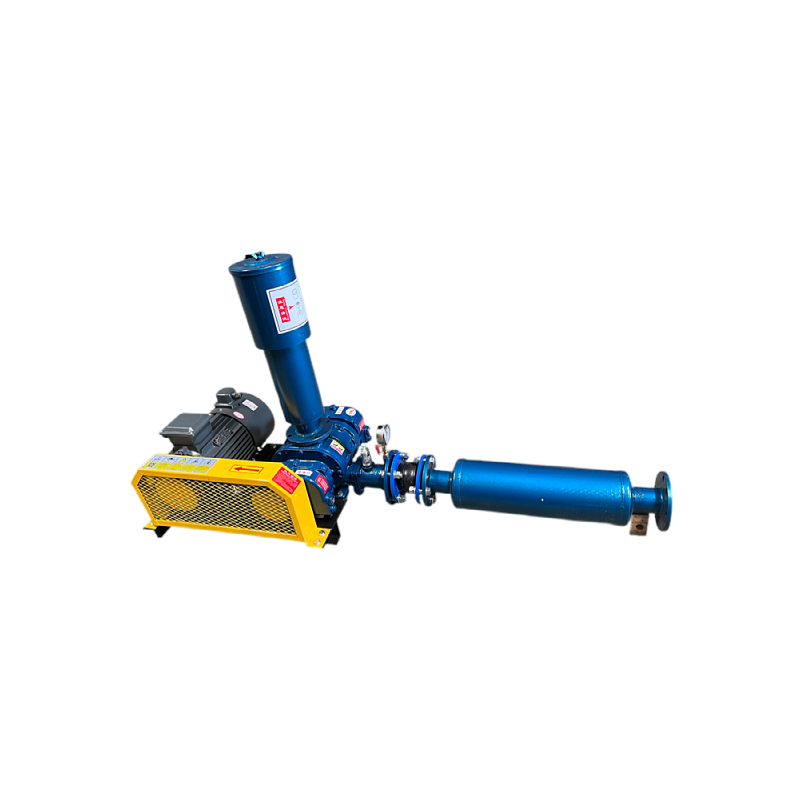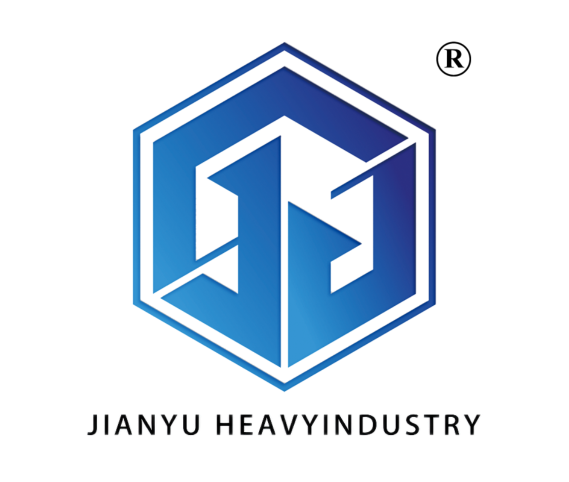โซลูชันล้ำสมัยในอุตสาหกรรมการเพาะเลี้ยงสัตว์น้ำยุคใหม่
ในอุตสาหกรรมการเพาะเลี้ยงสัตว์น้ำในปัจจุบัน อุปกรณ์ เทคโนโลยีมีบทบาทสำคัญในการเพิ่มประสิทธิภาพ ปรับปรุงคุณภาพน้ำ และรับประกันการดำเนินงานอย่างยั่งยืน ตั้งแต่ระบบเติมอากาศ อุปกรณ์ให้อาหาร ไปจนถึงอุปกรณ์บำบัดน้ำ นวัตกรรมได้เปลี่ยนวิธีปฏิบัติดั้งเดิมให้กลายเป็นกระบวนการที่แม่นยำและอัตโนมัติมากขึ้น อุปกรณ์การเพาะเลี้ยงสัตว์น้ำยุคใหม่ไม่เพียงแต่สนับสนุนการเจริญเติบโตของปลาและกุ้งเท่านั้น แต่ยังช่วยลดต้นทุนแรงงานและเพิ่มผลผลิตในฟาร์มทุกขนาด
บริษัท เจี้ยนหยู เว่ยเย่ (จี๋หนาน) แมชชีเนอรี่ เทคโนโลยี จำกัด ผู้ผลิตอุปกรณ์การเพาะเลี้ยงสัตว์น้ำชั้นนำ นำเสนอ ผลิตภัณฑ์ เช่น ปั๊มลมรูทส์ ปั๊มลมแบบแอร์ซัสเพนชัน ป้อนอาหารแบบโรตารี่ และระบบหลงเทียน โดยการผสานรวมขีดความสามารถด้านการวิจัย พัฒนา และการผลิตขั้นสูง บริษัทรับประกันประสิทธิภาพที่เชื่อถือได้และทางออกที่ทนทานสำหรับผู้ประกอบการเพาะเลี้ยงสัตว์น้ำทั่วโลก
ระบบที่ให้อากาศเพื่อคุณภาพน้ำที่เหมาะสมที่สุด
บทบาทของปั๊มลมรูทส์
ปั๊มลมรูทส์มีความจำเป็นอย่างยิ่งในการจ่ายออกซิเจนให้เพียงพอแก่บ่อเลี้ยงและถังเพาะเลี้ยงสัตว์น้ำ การรักษาระดับออกซิเจนให้อยู่ในระดับที่เหมาะสมจะช่วยส่งเสริมสุขภาพของสิ่งมีชีวิตในน้ำ และสนับสนุนอัตราการเติบโตที่สูงขึ้น ปั๊มเหล่านี้ออกแบบมาเพื่อทำงานต่อเนื่อง โดยให้ปริมาณอากาศที่เสถียรและมีประสิทธิภาพการใช้พลังงานสูง การใช้ปั๊มลมรูทส์คุณภาพสูงจะช่วยลดความเสี่ยงจากการขาดออกซิเจน และเพิ่มผลผลิตโดยรวมของการดำเนินงานเพาะเลี้ยงสัตว์น้ำ
ปั๊มลมแบบแอร์ซัสเพนชันและการกระจายออกซิเจนอย่างสม่ำเสมอ
เครื่องเป่าระบบอากาศช่วยกระจายฟองอากาศอย่างสม่ำเสมอทั่วถังและบ่อน้ำ ช่วยเพิ่มการไหลเวียนของน้ำและการซึมผ่านของออกซิเจน การระบายอากาศอย่างสม่ำเสมอนี้ช่วยป้องกันการสะสมของตะกอน ลดการขังของน้ำ และส่งเสริมสภาพแวดล้อมที่ดีต่อสิ่งมีชีวิตในน้ำ การออกแบบเครื่องเป่าที่เหมาะสมยังช่วยเพิ่มประสิทธิภาพการใช้พลังงาน พร้อมรับประกันว่าทุกมุมของบ่อจะได้รับออกซิเจนอย่างเพียงพอ
นวัตกรรมเทคโนโลยีการให้อาหาร
เครื่องให้อาหารแบบหมุนสำหรับการให้อาหารอย่างแม่นยำ
เครื่องให้อาหารแบบหมุนช่วยควบคุมการกระจายอาหาร ลดของเสีย และรับประกันว่าปลาแต่ละตัวจะได้รับโภชนาการในปริมาณที่เหมาะสม การให้อาหารตามตารางเวลาอย่างสม่ำเสมอที่ได้รับการสนับสนุนจากเครื่องเหล่านี้ ช่วยเพิ่มประสิทธิภาพการเจริญเติบโตและลดต้นทุนการดำเนินงาน เครื่องให้อาหารอัตโนมัติยังช่วยให้ผู้จัดการฟาร์มสามารถควบคุมโปรแกรมการให้อาหารได้อย่างแม่นยำ ช่วยปรับปรุงอัตราการแปลงอาหารและเพิ่มผลกำไรโดยรวมของฟาร์ม
ระบบหลงเทียนสำหรับการดำเนินงานขนาดใหญ่
ระบบลองเทียนั้นได้รับการออกแบบมาสำหรับสถานที่เพาะเลี้ยงสัตว์น้ำในขนาดใหญ่ ซึ่งสามารถส่งอาหารให้พร้อมกัน across หลายบ่อได้ โดยการรวมตัวจับเวลาแบบโปรแกรมได้และตัวควบคุมปริมาณอาหาร ระบบลองเทียช่วยลดความต้องการแรงงานและเพิ่มประสิทธิภาพการใช้อาหาร ระบบนี้มีประโยชน์อย่างยิ่งในระบบการเพาะเลี้ยงสัตว์น้ำที่มีความหนาแน่นสูง ซึ่งการควบคุมการให้อาหารอย่างแม่นยำถือเป็นสิ่งสำคัญ

อุปกรณ์บำบัดและตรวจสอบคุณภาพน้ำ
รักษามาตรฐานคุณภาพน้ำด้วยโซลูชันขั้นสูง
การเพาะเลี้ยงสัตว์น้ำแบบทันสมัยพึ่งพาอุปกรณ์ที่สามารถตรวจสอบและรักษาสภาพน้ำให้อยู่ในระดับที่เหมาะสมอย่างมาก อุปกรณ์เติมอากาศ ระบบกรอง และปั๊มหมุนเวียนน้ำทำงานร่วมกันเพื่อให้มั่นใจว่าระดับออกซิเจนละลาย ค่า pH และอุณหภูมิน้ำอยู่ในช่วงที่เหมาะสม การตรวจสอบอย่างต่อเนื่องช่วยป้องกันโรคและการเครียดของสิ่งมีชีวิตในน้ำ สนับสนุนการดำเนินงานที่ยั่งยืนและมีกำไร
การผสานรวมเซ็นเซอร์และระบบควบคุมอัตโนมัติ
การดำเนินงานด้านการเพาะเลี้ยงสัตว์น้ำในปัจจุบันมักใช้เซ็นเซอร์และระบบควบคุมอัตโนมัติในการติดตามค่าพารามิเตอร์ของน้ำแบบเรียลไทม์ อุปกรณ์เหล่านี้ช่วยลดการตรวจสอบด้วยมือ ทำให้สามารถปรับเปลี่ยนได้อย่างรวดเร็ว และแจ้งเตือนเมื่อสภาพแวดล้อมเบี่ยงเบนจากช่วงที่เหมาะสม การใช้ระบบอัตโนมัติช่วยให้สภาพแวดล้อมในการเพาะเลี้ยงสัตว์น้ำคงที่ ซึ่งจะช่วยเพิ่มประสิทธิภาพของระบบการเติมอากาศและการให้อาหาร
ประโยชน์ด้านประสิทธิภาพและความยั่งยืน
ลดต้นทุนพลังงานและอาหารสัตว์
อุปกรณ์การเพาะเลี้ยงสัตว์น้ำรูปแบบใหม่ช่วยลดการใช้พลังงานผ่านการทำงานของเครื่องเป่าลมที่ถูกปรับให้มีประสิทธิภาพและกลไกการให้อาหารที่แม่นยำ โดยการใช้เทคโนโลยีการเติมอากาศและการให้อาหารที่มีประสิทธิภาพ ฟาร์มสามารถบรรลุผลลัพธ์ที่ดีขึ้นด้วยค่าใช้จ่ายในการดำเนินงานที่ต่ำลง สิ่งนี้ไม่เพียงแต่ช่วยเพิ่มผลกำไร แต่ยังส่งเสริมการปฏิบัติที่รับผิดชอบต่อสิ่งแวดล้อม
สนับสนุนผลผลิตที่สูงขึ้นและการเจริญเติบโตที่แข็งแรง
เครื่องจักรการเพาะเลี้ยงสัตว์น้ำขั้นสูงช่วยสนับสนุนอัตราการเติบโตอย่างสม่ำเสมอ โดยการสร้างสภาพแวดล้อมที่เหมาะสมที่สุด ระดับออกซิเจนที่เสถียร การให้อาหารอย่างสม่ำเสมอ และสภาพน้ำที่สะอาด ช่วยลดความเครียดและอัตราการตายของสัตว์น้ำ การรวมประโยชน์เหล่านี้เข้ากับอุปกรณ์ที่เชื่อถือได้จากผู้ผลิตที่น่าเชื่อถือ ทำให้ฟาร์มเพาะเลี้ยงสัตว์น้ำสามารถคงไว้ซึ่งผลผลิตที่สูง มีความยั่งยืน และสามารถทนต่อความท้าทายในการดำเนินงานได้
การทำงานร่วมกับผู้จัดจำหน่ายอุปกรณ์ที่เชื่อถือได้
โซลูชันแบบครบวงจรตั้งแต่ขั้นตอนการพัฒนาจนถึงการสนับสนุน
บริษัท เจี้ยนหยู เว่ยเย่ (จีหนาน) เครื่องจักร เทคโนโลยี จำกัด ให้บริการโซลูชันแบบครบวงจร ตั้งแต่การออกแบบและพัฒนา ไปจนถึงการขายและการบริการหลังการขาย ผลิตภัณฑ์ของบริษัท ได้แก่ ปั๊มรูทส์ ปั๊มลมแบบแอร์ซัสเพนชัน ป้อนเม็ดแบบหมุน และระบบลองเทียน ได้รับการรับรองจากกระบวนการควบคุมคุณภาพอย่างเข้มงวดและวิธีการทดสอบที่ครอบคลุม
ความมุ่งมั่นในการให้คุณภาพและการตอบสนองความพึงพอใจของลูกค้า
บริษัทดำเนินตามนโยบายด้านความซื่อสัตย์สุจริต การมุ่งเน้นคุณภาพ และการพัฒนาทางเทคโนโลยี โดยการเลือกใช้อุปกรณ์จาก Jianyu Weiye ผู้ประกอบการงานเพาะเลี้ยงสัตว์น้ำจะได้รับประโยชน์จากประสิทธิภาพที่เชื่อถือได้ อายุการใช้งานยาวนาน และการสนับสนุนทางเทคนิคที่รวดเร็ว ความมุ่งมั่นในการให้บริการอย่างมีคุณภาพนี้ ช่วยให้ฟาร์มสามารถบรรลุประสิทธิภาพสูงสุดและการผลิตอย่างยั่งยืน
คำถามที่พบบ่อย
อุปกรณ์เพาะเลี้ยงสัตว์น้ำหลักๆ มีอะไรบ้าง
อุปกรณ์เพาะเลี้ยงสัตว์น้ำสมัยใหม่ ได้แก่ อุปกรณ์เติมอากาศ เช่น เครื่องเป่าแบบรูทส์ (Roots blowers) และเครื่องเป่าแบบแอร์เซอร์เพนชัน (air suspension blowers) ระบบให้อาหาร เช่น โรตารีฟีดเดอร์ (rotary feeders) และระบบหลงเทีย (Longtie systems) รวมถึงอุปกรณ์บำบัดน้ำและตรวจสอบคุณภาพน้ำ แต่ละชนิดมีบทบาทสำคัญในการรักษามาตรฐานคุณภาพน้ำ ปรับปรุงการใช้อาหารให้มีประสิทธิภาพ และเพิ่มผลผลิตโดยรวม
ระบบเติมอากาศช่วยเสริมสร้างสุขภาพสัตว์น้ำอย่างไร
ระบบเติมอากาศช่วยรักษาระดับออกซิเจนที่ละลายน้ำ กระตุ้นการไหลเวียนของน้ำ และป้องกันการสะสมของตะกอน การเติมอากาศที่เหมาะสมสนับสนุนการเจริญเติบโตที่แข็งแรงของปลาและกุ้ง ลดความเครียด และลดความเสี่ยงของการระบาดของโรคในฟาร์มเพาะเลี้ยงสัตว์น้ำ
ระบบให้อาหารอัตโนมัติให้ประโยชน์อะไรบ้าง
เครื่องให้อาหารอัตโนมัติจ่ายอาหารในปริมาณที่แม่นยำตามช่วงเวลาที่กำหนด ช่วยลดของเสียและปรับปรุงอัตราการแปลงอาหาร ระบบเหล่านี้ช่วยลดความต้องการแรงงาน และช่วยให้ผู้ประกอบการเพาะเลี้ยงสัตว์น้ำสามารถควบคุมโภชนาการได้อย่างสม่ำเสมอ เพื่อการเจริญเติบโตอย่างมีประสิทธิภาพสูงสุด
ทำไมต้องเลือกผู้จัดจำหน่ายมืออาชีพสำหรับอุปกรณ์การเพาะเลี้ยงสัตว์น้ำ
ผู้จัดจำหน่ายที่น่าเชื่อถืออย่าง Jianyu Weiye รับประกันอุปกรณ์ที่ทนทานและเชื่อถือได้ พร้อมความเชี่ยวชาญทางเทคนิคและการบริการหลังการขาย การทำงานกับผู้ผลิตมืออาชีพช่วยลดความเสี่ยงในการดำเนินงาน เพิ่มประสิทธิภาพ และรับประกันว่าฟาร์มจะได้รับระบบที่มีคุณภาพสูงและเข้ากันได้อย่างเหมาะสม

